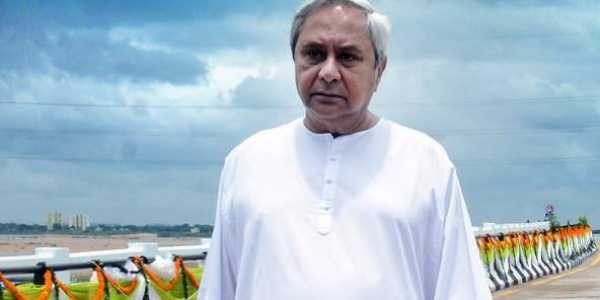
After the roar, the whimper! All eyes — and ears – were on what Prime Minister Narendra Modi would say on the first of his three scheduled visits to Odisha on Monday.
In a significant departure from the kid-glove treatment he had meted out to the Naveen Patnaik government on all previous visits, Modi had whetted the appetite of the faithful during his last visit to the state on September 22 with direct mention of the all-pervasive ‘PC’ (percentage commission) culture in the state.
It was thus only natural not just for party workers but also for political observers to wait with bated breath to see if he would raise the pitch a notch higher when he addressed a public meeting at the expansive Goshala ground on the foothills of the historic Barunei hills in Khurda district, not far from Bhubaneswar. But what he dished out at the rally turned out to be a tame affair as he dwelt more on what his government had done for Odisha in the four-and-a-half years it has been in power at the Centre than the failures of the Naveen Patnaik dispensation.
The sullen faces of the BJP workers returning from the rally said it all. In the run-up to the PM’s visit, state leaders of the party had built up expectations that he would sound the poll bugle at Khurda by tearing apart the Naveen Patnaik government. After the event, however, the leaders themselves were hard pressed to explain away the return to the ‘kid gloves’ mode.
While it is true that the Prime Minister did touch upon everything from the lack of development and the sorry state of agriculture, healthcare and primary education to the ‘sexier’ issue of corruption, it lacked the sting that marked his speech in Jharsuguda in September.
“Who is feeding the demon of corruption?” he asked without bothering to answer the question himself. Not once during his speech did Modi name either Patnaik or the BJD.
Earlier, the PM was all bonhomie with Patnaik while sharing the stage with him during a function to dedicate the new IIT, Bhubaneswar campus at Arugul on the outskirts of the city. The CM, too, was his usual courteous self, thanking the PM for the Centre’s decision to build a memorial to Buxi Jagabandhu, the hero of the Paika Rebellion of Khurda in 1817, claimed to be India’s first War of Independence. This was seen by perceptive observers as a precursor of what lay in store at the Barunei rally.
So, what led to the sudden muting of the war cry? The results of the three ‘heartland’ states of Rajasthan, Madhya Pradesh and Chhattisgarh, say most political observers. It has sobered down the expectations of the BJP in Odisha — at least in the Assembly elections. There was no mention in Modi’s address of the ‘Mission 120’ (the goal of winning 120 out of the 147 seats in the Assembly) launched by BJP chief Amit Shah amid great fanfare in the aftermath of the party’s commendable show in the panchayat elections in February last year. All that he talked about instead was a ‘yearning for change’ that is supposedly agitating the people of Odisha.
Modi’s decision to throw in the towel, however, did not come as a surprise for those who have kept track of events in Odisha. ‘Mission 120’ was a daydream even when it was announced in the wake of the good show in panchayat elections and the stupendous, morale boosting victory in the UP Assembly elections. But with the moribund Congress beginning to get its act together under new PCC president Niranjan Patnaik, the BJP does not have a hope in hell to reach anywhere near the 120 mark. Thus, it makes eminent political sense to concede defeat and hand over Odisha to Naveen Patnaik on a platter in the hope that the BJD supremo would continue to bail out the NDA, if needed, after the general elections in 2019, just as he has done in the current term of the Lok Sabha.
This barter suits Patnaik just fine. In his 18 years on the hot seat, Patnaik has repeatedly shown that he would rather confine himself to ruling Odisha rather than try to become the ‘kingmaker’ in national politics. Past master in the art of ‘managing’ the two national parties, he has continued to follow the same policy that he did during the 10 years of UPA rule: cry ‘central neglect’ on every issue even while enjoying the best of relations with the bosses of the ruling party at the Centre. Analysts see his ‘equi-distant from both BJP and Congress’ as nothing more than a jumla that allows him to keep the door ajar for a post-poll understanding, tacit or otherwise, with either of them depending on the situation.
Far from being a worry for him, the ‘resurgence’ of sorts in the Congress could well prove to be a boon for the Chief Minister, who is aiming at an unprecedented fifth successive term in office, because it would only help split the anti-BJD vote and ensure a win for him.
Significantly, Patnaik met TRS chief K Chandrashekar Rao a day before Modi’s visit but made no commitment on the ‘federal front’ proposed by the Telangana Chief Minister. But if his conduct in the past is anything to go by, he is unlikely to join any front. He would rather go it alone.


.jpeg)

